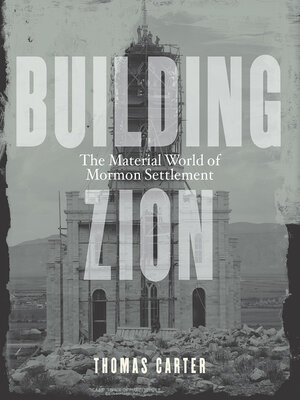Building Zion
ebook ∣ The Material World of Mormon Settlement · Architecture, Landscape and Amer Culture
By Thomas Carter

Sign up to save your library
With an OverDrive account, you can save your favorite libraries for at-a-glance information about availability. Find out more about OverDrive accounts.
Find this title in Libby, the library reading app by OverDrive.



Search for a digital library with this title
Title found at these libraries:
| Library Name | Distance |
|---|---|
| Loading... |
For Mormons, the second coming of Christ and the subsequent millennium will arrive only when the earth has been perfected through the building of a model world called Zion. Throughout the nineteenth century the Latter-day Saints followed this vision, creating a material world—first in Missouri and Illinois but most importantly and permanently in Utah and surrounding western states—that serves as a foundation for understanding their concept of an ideal universe.
Building Zion is, in essence, the biography of the cultural landscape of western LDS settlements. Through the physical forms Zion assumed, it tells the life story of a set of Mormon communities—how they were conceived and constructed and inhabited—and what this material manifestation of Zion reveals about what it meant to be a Mormon in the nineteenth century. Focusing on a network of small towns in Utah, Thomas Carter explores the key elements of the Mormon cultural landscape: town planning, residences (including polygamous houses), stores and other nonreligious buildings, meetinghouses, and temples. Zion, we see, is an evolving entity, reflecting the church's shift from group-oriented millenarian goals to more individualized endeavors centered on personal salvation and exaltation.
Building Zion demonstrates how this cultural landscape draws its singularity from a unique blending of sacred and secular spaces, a division that characterized the Mormon material world in the late nineteenth century and continues to do so today.







